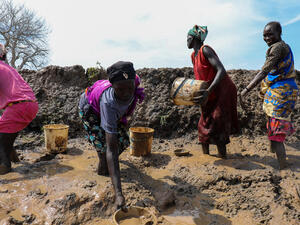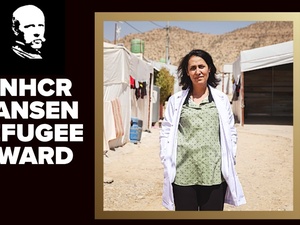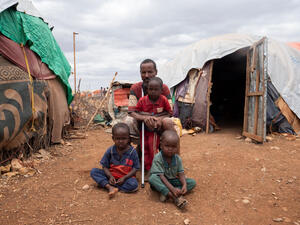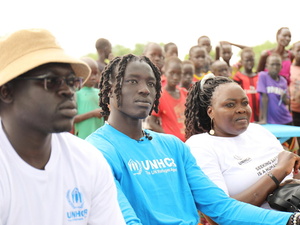Eritrea: border area devastated
Eritrea: border area devastated
UNHCR officials who travelled to the border area of Eritrea recently vacated by Ethiopian troops found the area almost completely destroyed, thoroughly looted, depopulated and mined. The findings dashed hopes for a speedy return of the town's 7,000 inhabitants driven out by the recent war between Ethiopia and Eritrea. The scope of destruction also cast doubt on the return of tens of thousands more people driven out from other areas not yet visited by UNHCR.
A team of UNHCR field workers, accompanied by partner agencies, travelled last week to the town of Omhajer, nearly 300 km south-west of Eritrea's capital, Asmara. They were the first foreigners to visit the town since Ethiopian troops pulled back on September 21. The town, located in the south-west corner of Eritrea wedged between the Ethiopian and Sudanese borders, was once an important political, economic and military centre for Eritrea on the Setit River.
The team found all permanent structures and public buildings, including the city hospital and two schools, 80 percent destroyed. The roofs and all items of any value had been removed. All commercial buildings were completely looted.
The local mosque and one Orthodox church had been heavily damaged, with much of the roof of the mosque missing, and a fire apparently lit within the church. Everything of value had either been taken or destroyed, including the church's icons. The local military said since the Ethiopians pulled back one local man was killed by a land mine and 50 other mines had been cleared.
Many of the tukuls (traditional mud/wood/straw houses) have also been destroyed.
The Ethiopian troops, who held the area for three months, withdrew last month under a peace agreement signed by Ethiopia and Eritrea in Algiers last June.
The war drove some 100,000 Eritreans into neighbouring Sudan and displaced many more inside of Eritrea. About half of those in Sudan have since gone back. The war was also a setback for UNHCR's plans to return up to 160,000 Eritreans who had fled to Sudan during earlier conflicts.









